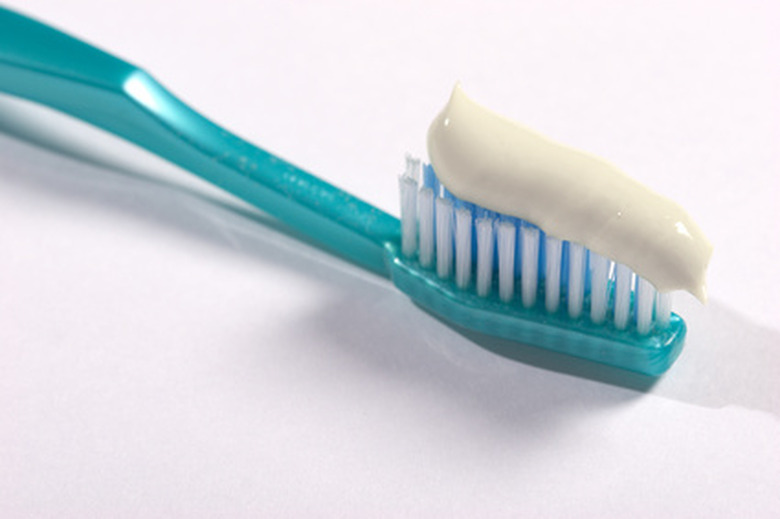Fluorine School Projects
Fluorine is a highly toxic, extremely reactive gas. It is perhaps best known for its use as a compound (fluoride), which is a common component of toothpaste and is sometimes added to the city's water supply. Exposure to fluorine gas must be limited to 1-part fluorine for every million parts of air, due to its extreme toxicity. Fluorine gas has high reactivity and potential for explosion and is used in the making of atomic bombs. For safety reasons, any classroom and science-fair projects that might include a hands-on approach to the element should allow students to work with it in compound form and not as a gas.
Atom Model
Atom Model
Students create and label a three-dimensional scale model of a fluorine atom, including the nucleus, protons, neutrons and electrons. Students may use paper mache, straws, ping-pong balls, card stock, candy, cotton balls or any other material to represent the parts of the atom. The model may be suspended, mounted or free-standing, but students should be instructed that the model must accurately represent the atom, including the space between the nucleus and the electrons.
Protective Properties
Protective Properties
Students conduct an experiment using eggs and vinegar to determine the protective properties of fluorine on tooth enamel. Students submerge one egg in a fluoride solution (fluoride mouthwash is acceptable) for five minutes. Students then pour white vinegar into two containers. They place an egg into each container of vinegar. One of the eggs has been covered by fluoride solution, the other has not. Students will discover that the egg not coated with fluoride starts to bubble as the acid in the vinegar attacks the minerals in the eggshell.
Effect on Plant Growth
Effect on Plant Growth
Students test the effect of fluorine on the growth and health of plants. Students plant seeds and water half the seeds as normal. The children add fluoride solution to the water used on the remaining seeds. As the plants grow, students chart the growth of the plants and observe any differences in appearance. Students should notice that the plants exposed to fluoride are smaller and shorter than the plants that were not exposed to fluoride. The plants treated with fluoride will also have yellowing of the leaves.
Effect on Oral Bacteria
Effect on Oral Bacteria
Students test a variety of mouthwash solutions, each with a different active ingredient, to identify which is the best at reducing oral bacteria. Students swab their mouths before and after using a mouthwash, and grow the cultures on a petri dish. Children observe the petri dishes four days later and record the growth of bacteria in the cultures from before and after the mouthwash. Students use the results to identify whether fluoride has a greater ability to kill bacteria than other active ingredients such as antiseptic or zinc chloride.
References
- Chemistry Explained: Fluorine
- Mr. Williams' 6th Grade Science Blog: Model of an Atom Project
- Healthy Teeth: Experiments: The Power of Fluoride
- All Science Fair Projects: Which Mouthwash Kills the Most Oral Bacteria
- Green Facts: Fluoride: To What Extent Can Fluoride be Harmful to Organisms in the Environment?
Cite This Article
MLA
Benjamin, Tia. "Fluorine School Projects" sciencing.com, https://www.sciencing.com/fluorine-school-projects-7894204/. 24 April 2017.
APA
Benjamin, Tia. (2017, April 24). Fluorine School Projects. sciencing.com. Retrieved from https://www.sciencing.com/fluorine-school-projects-7894204/
Chicago
Benjamin, Tia. Fluorine School Projects last modified March 24, 2022. https://www.sciencing.com/fluorine-school-projects-7894204/
